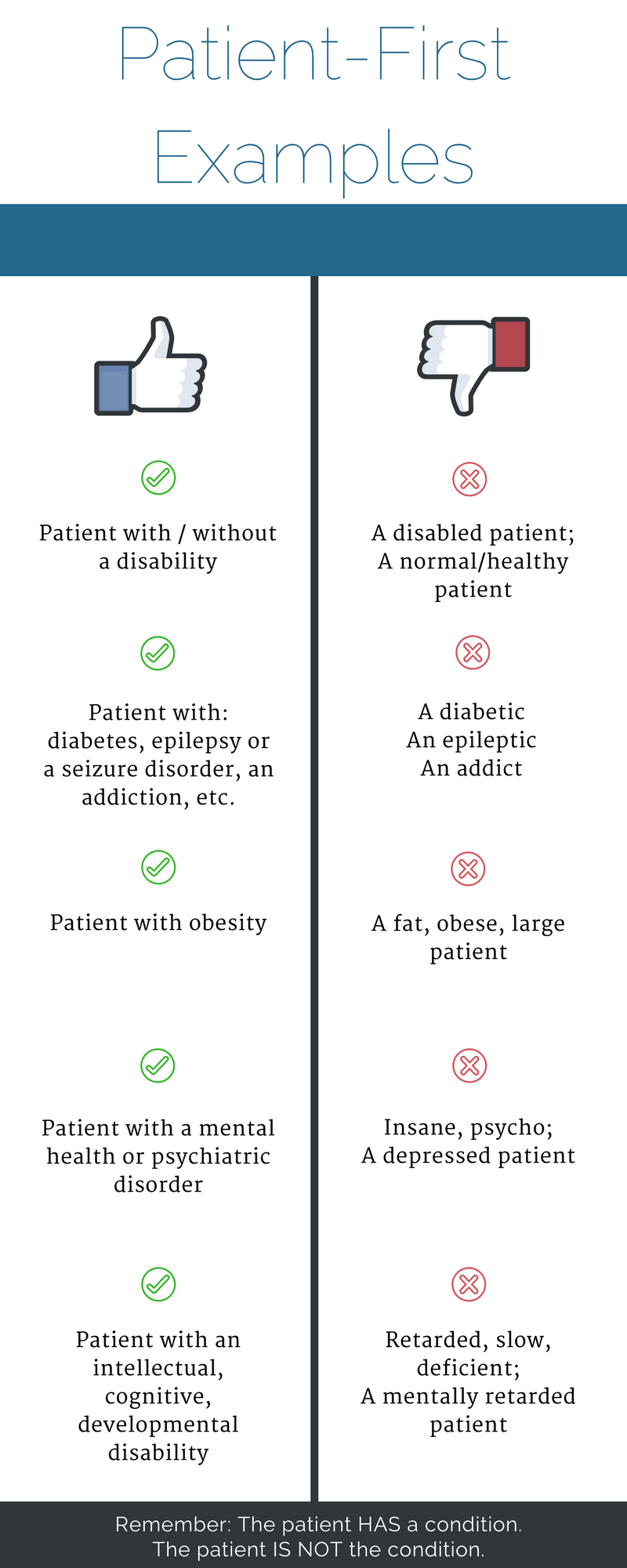Patient-First Language In Medical Writing
“A PERSON WITH DIABETES IS A DIABETIC, RIGHT?”
According to the CDC, patient-first language (also known as people-first language) is defined as “emphasizing the person, not the disability,” and is the correct way of referring to patients.
For example, instead of using the term "epileptics," patient-first language would use the phrase, "patients with epilepsy."
Using patient-first language may take up more space on the page, but it is an important way to encourage healthcare professionals to consider the entire patient, and not just focus on the disease or condition.
HOW DO I USE PATIENT-FIRST LANGUAGE?
Patient-first language follows a simple formula of: “patient/person with ______.”
Remember:
"Patient"/ "Person" always comes before the condition
Use the proper medical terminology
Additional information about the correct usage can be found at the CDC or in the AMA Manual of Style, which has proscribed it as a requirement.
AMA Manual of Style: Disabilities - Correct and Preferred Usage
IS THIS POLITICAL CORRECTNESS RUN AMOK OR IS THERE SOMETHING MORE TO IT?
Patient-first language first appeared in The Denver Principles, a document created by people with AIDS about their rights and reaffirming their humanity. People with AIDS had been treated like passive victims at best or ostracized and treated as the other at worst.
Defining themselves as people first was an attempt to force the country at large to view them as individuals and neighbors instead of something dirty and taboo.
ARE THERE ANY EXCEPTIONS?
As with anything, there are critics to patient-first language, and where communities or individual patients reject it, it should be avoided.
In particular, the blind and deaf communities have largely rejected patient-first language, and their right to self-determination should be respected.
The autism community is divided with some activists rejecting it and others supporting it.


